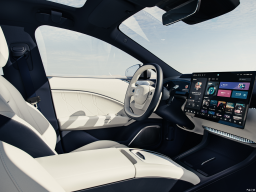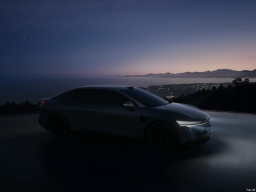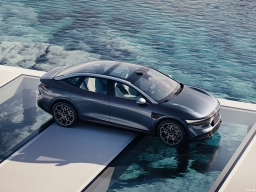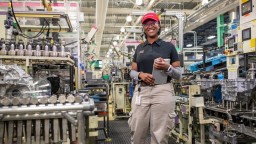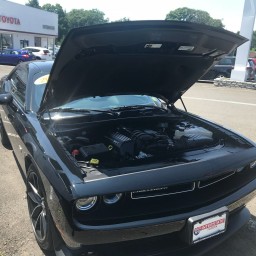- 180 users
Pinned Items
Recent Activities
-
Stream item published successfully. Item will now be visible on your stream.
-
Olathe Dodge Chrysler Jeep Ram dealer in Kansas offers a full lineup of new and pre-owned vehicles to fit every lifestyle. Our Dodge Chrysler Jeep Ram service center provides expert maintenance and repairs, while our parts department carries...Olathe Dodge Chrysler Jeep Ram dealer in Kansas offers a full lineup of new and pre-owned vehicles to fit every lifestyle. Our Dodge Chrysler Jeep Ram service center provides expert maintenance and repairs, while our parts department carries genuine Dodge, Jeep, Ram, and Chrysler parts to keep your vehicle performing at its best. From versatile SUVs to powerful trucks like the used Dodge Ram 1500, you’ll find it all at our Olathe, KS dealership. Visit our website or stop by today to get started.More
More information :
Address : 15500 W 117th St, Olathe, Kansas, 66062, United States
Phone : (913) 780-3700
Website : https://www.olathedodgechryslerjeep.net
Business Hours :
Monday - Saturday : 8:30 a.m. - 7:00 p.m.
Sunday : ClosedPost is under moderationStream item published successfully. Item will now be visible on your stream. -
Post is under moderationStream item published successfully. Item will now be visible on your stream.
-
Stream item published successfully. Item will now be visible on your stream.
-
Post is under moderationStream item published successfully. Item will now be visible on your stream.
-
World Kia Joliet is a trusted Kia dealership in Joliet, IL, offering a wide selection of new Kia cars and Kia used cars for every budget and lifestyle. We proudly serve shoppers searching for Kia Naperville, Willowbrook Kia, and Kia Orland Park...World Kia Joliet is a trusted Kia dealership in Joliet, IL, offering a wide selection of new Kia cars and Kia used cars for every budget and lifestyle. We proudly serve shoppers searching for Kia Naperville, Willowbrook Kia, and Kia Orland Park options with a convenient location and exceptional customer service. Our finance team also provides Kia bad credit financing solutions to help more drivers get approved and on the road with confidence.More
Address : 2525 W Jefferson St, Joliet, IL 60435, United States
Website : https://www.worldkiajoliet.com
Phone : +1 (866) 486-2931
Business Hours : Monday - Friday: 9:00 a.m. - 9:00 p.m. | Saturday: 9:00 a.m. - 7:00 p.m. | Sunday: Closed
Post is under moderationStream item published successfully. Item will now be visible on your stream. -
Post is under moderationStream item published successfully. Item will now be visible on your stream.
-
Stream item published successfully. Item will now be visible on your stream.
-
Post is under moderationStream item published successfully. Item will now be visible on your stream.
-
Great Lakes Honda West, a trusted Honda dealership in Elyria, OH, offers a variety of Honda vehicles, including the sporty Honda Civic Si for sale and the rugged Honda Pilot AWD for sale. We also specialize in assisting customers as one of the...Great Lakes Honda West, a trusted Honda dealership in Elyria, OH, offers a variety of Honda vehicles, including the sporty Honda Civic Si for sale and the rugged Honda Pilot AWD for sale. We also specialize in assisting customers as one of the car dealerships that work with bad credit, providing options for those in need. Additionally, our dealership has a selection of used Honda trucks available. Visit Great Lakes Honda West to explore our full inventory and take advantage of the inclusive financing options.More
More Informations
Address : 823 Leona St, Elyria. OH. 44035. United States.
Phone : (440) 306-7581
Website : https://www.glakeshondawest.com
Business Hours
Sales Hours
Sunday : 12:00 PM - 4:00 PM
Monday : 9:00 AM - 8:00 PM
Tuesday : 9:00 AM - 8:00 PM
Wednesday : 9:00 AM - 8:00 PM
Thursday : 9:00 AM - 8:00 PM
Friday : 9:00 AM - 6:00 PM
Saturday : 9:00 AM - 5:00 PMPost is under moderationStream item published successfully. Item will now be visible on your stream. -
Post is under moderationStream item published successfully. Item will now be visible on your stream.
-
Stream item published successfully. Item will now be visible on your stream.
-
Post is under moderationStream item published successfully. Item will now be visible on your stream.
-
At Ken Ganley Ford Norton, we stand out as a leader among Ford commercial dealerships, offering exceptional Ford dealer service. Check out our robust selection, including the popular used Ford Bronco and attractive Ford Explorer lease deals....At Ken Ganley Ford Norton, we stand out as a leader among Ford commercial dealerships, offering exceptional Ford dealer service. Check out our robust selection, including the popular used Ford Bronco and attractive Ford Explorer lease deals. Visit us to explore our comprehensive vehicle options and services.More
More Informations
Address : 2835 Barber Road, Barberton. OH. 44203. United States
Email : jwheatley@ganleyauto.com
Phone : (234) 368-3424
Website : https://www.kenganleyfordnorton.com
Business Hours :
Monday 9:00AM - 7:00PM
Tuesday 9:00AM - 6:00PM
Wednesday 9:00AM - 6:00PM
Thursday 9:00AM - 7:00PM
Friday 9:00AM - 6:00PM
Saturday 9:00AM - 5:00PM
Sunday ClosedPost is under moderationStream item published successfully. Item will now be visible on your stream. -
Post is under moderationStream item published successfully. Item will now be visible on your stream.
-
Stream item published successfully. Item will now be visible on your stream.
-
Post is under moderationStream item published successfully. Item will now be visible on your stream.
-
Stream item published successfully. Item will now be visible on your stream.
-
Frank Leta Acura, a trusted St. Louis Acura Dealer, offers a premier selection of new Acura cars, crossovers, and SUVs, complete with Lifetime Warranties. Serving the entire St. Louis area, we excel in selling top Acura models and provide...Frank Leta Acura, a trusted St. Louis Acura Dealer, offers a premier selection of new Acura cars, crossovers, and SUVs, complete with Lifetime Warranties. Serving the entire St. Louis area, we excel in selling top Acura models and provide comprehensive services including buying, selling, and trading, ensuring a seamless journey in acquiring your dream car. Our dealership's commitment extends beyond sales, as evidenced by our Leta for Life Program, which includes perks like car washes, pickup & delivery services, tech support, and more. At Frank Leta Acura, purchasing a vehicle is just the beginning. Our state-of-the-art Acura service center, equipped with the latest diagnostic tools and staffed by experienced technicians, guarantees top-tier care and maintenance for your vehicle. Whether you're eyeing a new Acura, trading in your current car, or seeking expert service, our dealership upholds the highest standards of customer satisfaction and automotive excellence.More
As a premier Acura dealer in St. Louis, Frank Leta Acura offers an impressive selection of new Acura cars for sale, including the sophisticated Frank Leta Acura MDX SUV. Whether you're looking to buy, sell, or trade cars, our dedicated team is here to provide a seamless experience with a commitment to customer satisfaction. Explore our inventory and discover why we are the go-to destination for all your automotive needs.
More informations :
Address : 11777 Tesson Ferry Road, St. Louis, MI. 63128 United States.
Email : acura@frankleta.com
Phone : (314) 549-8020
Website : https://www.frankletaacura.com
Business Hours :
Monday - Friday : 8:30 AM - 7:00 PM
Saturday : 8:30 AM - 5:00 PM
Sunday : ClosedPost is under moderationStream item published successfully. Item will now be visible on your stream. -
Post is under moderationStream item published successfully. Item will now be visible on your stream.
There are no activities here yet
